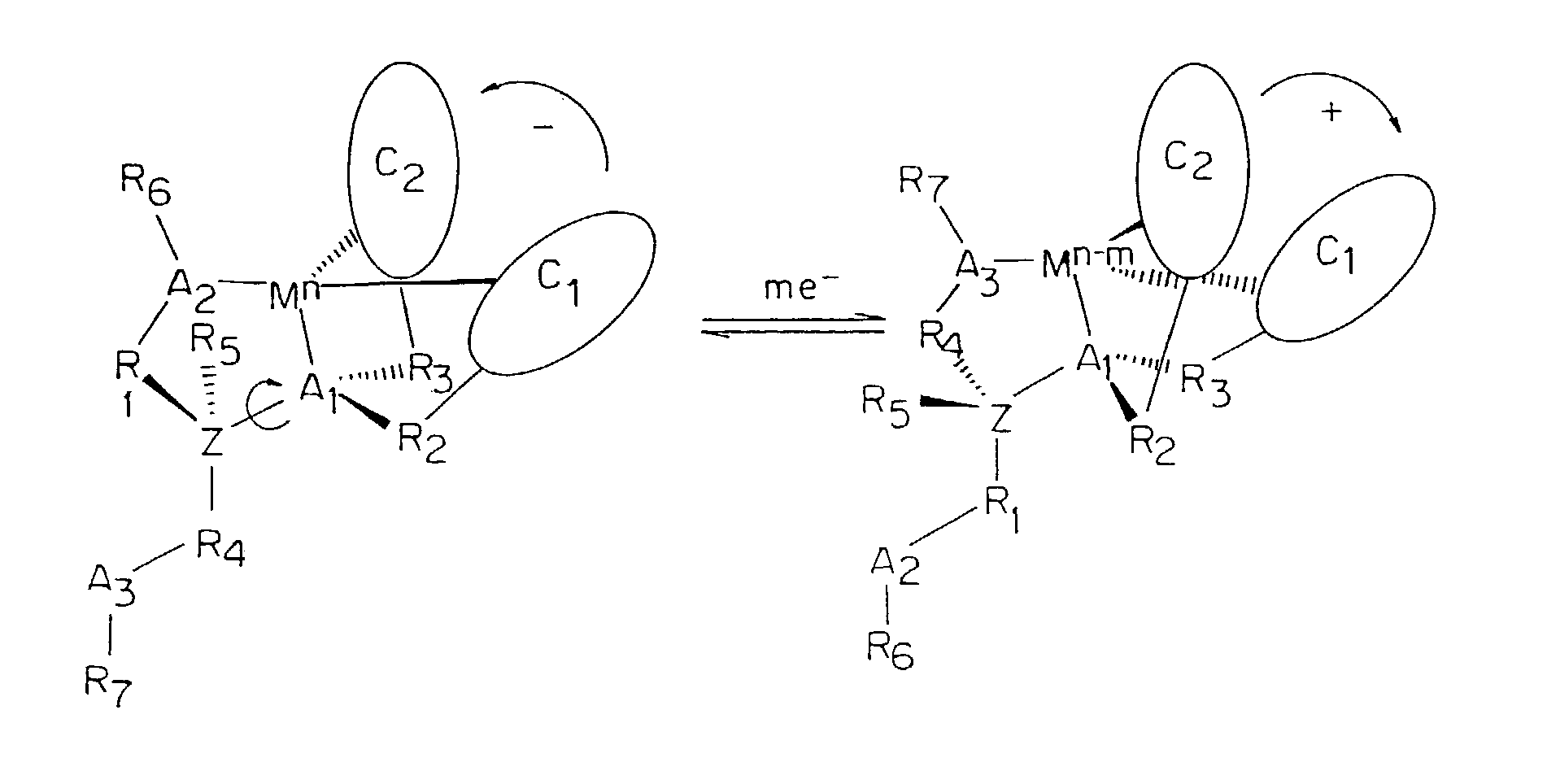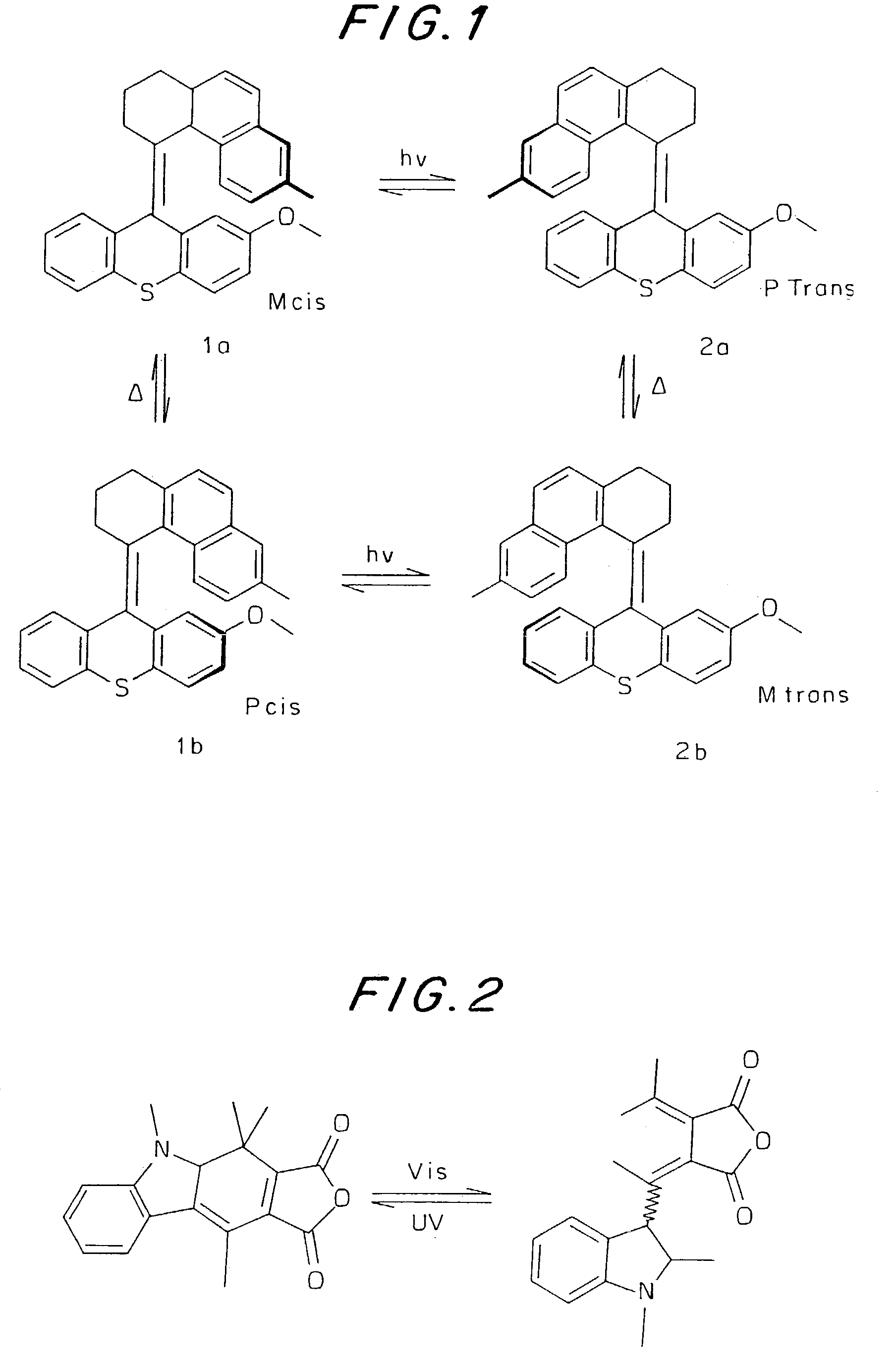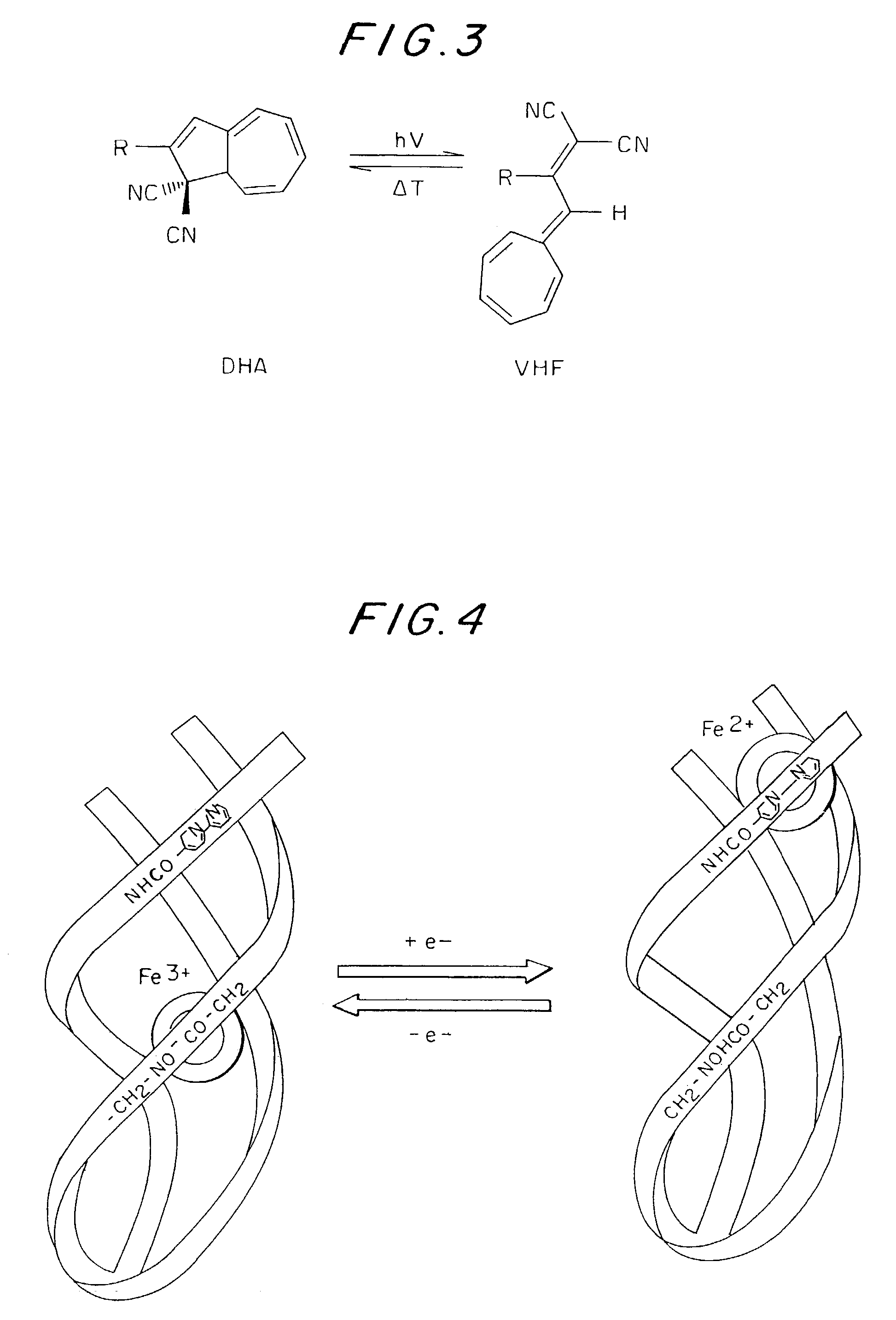Electron-driven chirality switches
a chirality switch and chirality switch technology, applied in the field of three-dimensional metal ion complexes containing chromophores, can solve the problems of destructive readout and failure of /b> to give exciton-coupled cd spectra, and achieve the effects of less power, strong optical polarization, and high data storage density
- Summary
- Abstract
- Description
- Claims
- Application Information
AI Technical Summary
Benefits of technology
Problems solved by technology
Method used
Image
Examples
Embodiment Construction
[0057]In the formula shown in FIG. 14, A is an atom that can coordinate to a metal ion such as nitrogen, oxygen, or sulfur;
[0058]C1 and C2 are the same or different chromophores capable of absorbing light that also contain an atom that may coordinate to a metal ion;
[0059]Z is a pivot atom, or chiral atom, e.g., carbon;
[0060]R1–R4 are linker groups, and may be —(CH2)n—, —O—, —S—, —NR8—, carbonyl, carboxyl,
[0061]wherein n can be an integer of from 1 to 4
[0062]R8 is straight-chain or branched alkyl having from 1 to 8 carbon atoms.
[0063]R5–R7 are terminal groups which can be hydrogen, C1–C8 branched or straight chain alkyl groups, C6–C14 substituted or unsubstituted aromatic groups and heteroaromatic groups having from one to three hetero atoms. The hetero atoms can be nitrogen, sulfur, or oxygen.
[0064]M is a metal ion which can exist in at least two oxidation states.
[0065]The basic switching mechanisms of the present invention can be used with any metal ion that exists in two oxidation...
PUM
| Property | Measurement | Unit |
|---|---|---|
| pH | aaaaa | aaaaa |
| temperature | aaaaa | aaaaa |
| resistance to fatigue | aaaaa | aaaaa |
Abstract
Description
Claims
Application Information
 Login to View More
Login to View More - R&D
- Intellectual Property
- Life Sciences
- Materials
- Tech Scout
- Unparalleled Data Quality
- Higher Quality Content
- 60% Fewer Hallucinations
Browse by: Latest US Patents, China's latest patents, Technical Efficacy Thesaurus, Application Domain, Technology Topic, Popular Technical Reports.
© 2025 PatSnap. All rights reserved.Legal|Privacy policy|Modern Slavery Act Transparency Statement|Sitemap|About US| Contact US: help@patsnap.com



